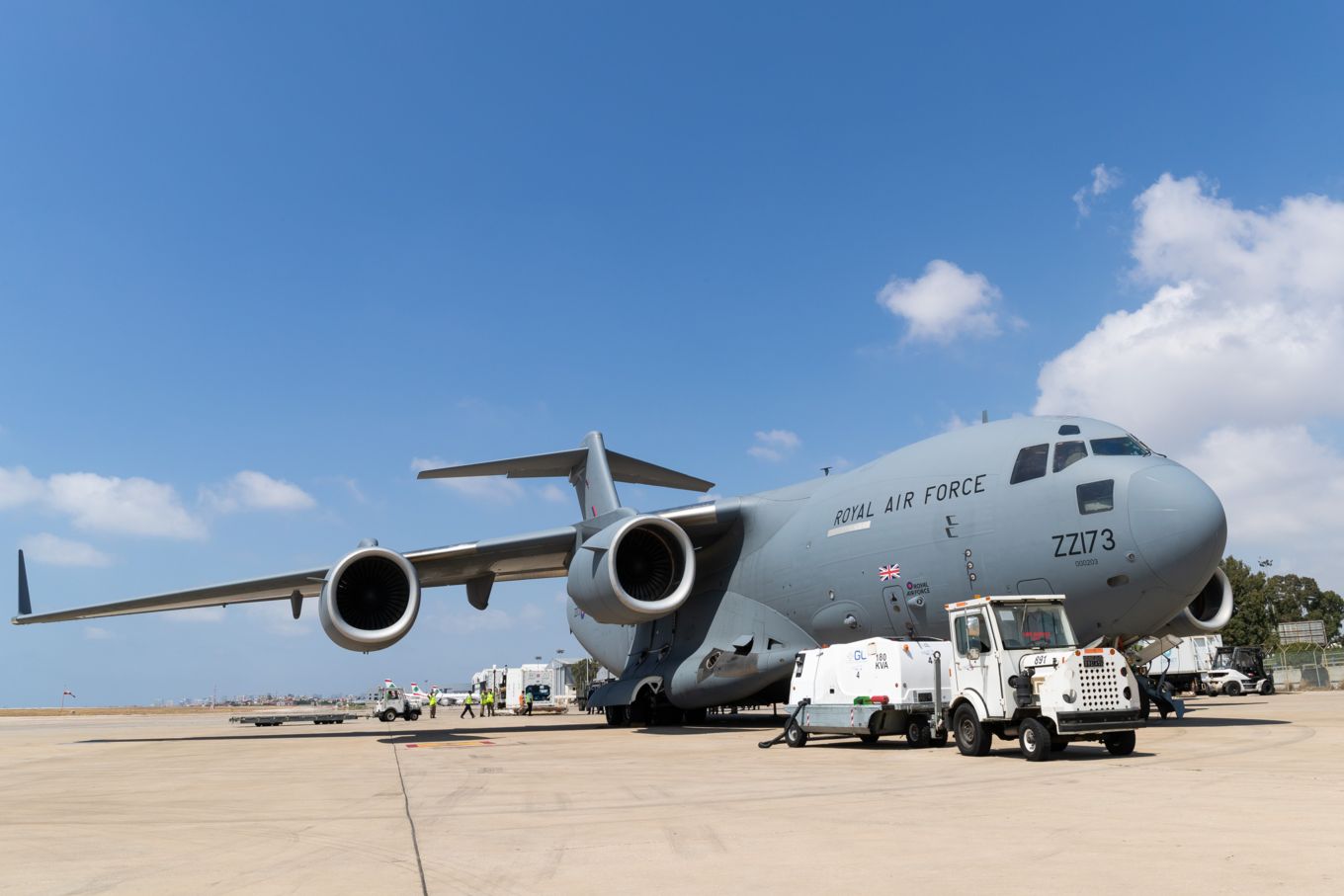On the evening of 14/6, an F-35B stealth fighter jet, part of the HMS Prince of Wales carrier strike group, was returning to its mothership after participating in joint exercises with the Indian Navy in the Arabian Sea. Inclement weather near the HMS Prince of Wales prevented the jet from landing, despite running low on fuel.
The emergency forced the British pilot to make an emergency landing at Thiruvananthapuram Airport in Kerala, southern India.
While this is standard emergency procedure, the fighter jet experienced technical difficulties with its engine after landing safely and could not return to the carrier. Engineers from HMS Prince of Wales inspected the aircraft, but have been unable to resolve the issue, leaving the $110 million stealth fighter stranded in India for nearly a month.
A spokesperson for the British High Commission in India stated last week that London had approved moving the F-35B to a maintenance area at Thiruvananthapuram Airport for repairs. However, this could only happen after British technicians transported specialized equipment to Kerala.
Thiruvananthapuram Airport officials reported that British engineers made several unsuccessful attempts to repair the fighter jet. They believe there is a problem with the hydraulic system, but the cause remains unknown.
While awaiting repairs, six Royal Air Force officers are guarding the F-35B around the clock to protect its classified technology. Indian authorities are providing outer security and accommodations for the British personnel.
"The F-35 fighter jet has a lot of secret technology that needs to be protected," said Christoph Bergs, an aviation expert at the Royal United Services Institute. "You wouldn't want anyone getting close to it, tampering with it, taking close-up pictures, or causing any more trouble".
 |
A British F-35B fighter jet at Thiruvananthapuram Airport in Kerala, India. Photo: BBC |
A British F-35B fighter jet at Thiruvananthapuram Airport in Kerala, India. Photo: BBC
The grounding of a cutting-edge British fighter jet in India has raised concerns, even reaching the British Parliament. Conservative MP Ben Obese-Jecty demanded the government outline the measures being taken to secure the aircraft and restore it to operational status.
"What steps is the government taking to fix this aircraft, how long will it take, and how will it ensure the security of critical technologies while the aircraft is in the maintenance area?", Obese-Jecty asked.
British defense official Luke Pollard confirmed the F-35B remained under strict British control, protected by "the best people" constantly on duty, but could not say when the jet would be airworthy again.
Dr. Sameer Patil, director of the Center for Security, Strategy and Technology at the ORF research organization in Mumbai, suggested the Royal Navy has two options: repair the jet on-site or transport it out of India using a large cargo plane like the C-17 Globemaster.
Observers believe dismantling and transporting the F-35B via a C-17 is the more viable option, given the failed repair attempts. However, transporting the stealth fighter back to Britain presents its own challenges.
The C-17 is a large military transport aircraft used by the US, UK, India, and other countries. It has a cargo bay large enough to transport troops and even AH-64 Apache attack helicopters.
Indian defense expert Sandeep Unnithan explained that a C-17 can carry about 77 tons of cargo, equivalent to almost two F-35s. However, the F-35's length (approximately 14 m) and wingspan (approximately 11 m) pose a problem.
The C-17's cargo bay is 26 m long but only 4 m wide, meaning a fully assembled F-35B won't fit. "Technicians will have to remove the fighter jet's wings to fit it inside the C-17's cargo hold," he explained.
This is a complex procedure. Each component is protected by a unique code during disassembly to mitigate the risk of stealth technology theft. Therefore, Lockheed Martin-authorized engineers must perform the wing removal.
"Dismantling the wings of this extremely advanced fifth-generation stealth fighter will be a very complex process. But it seems there is no other option," Unnithan said.
The British military will likely closely supervise the process to protect the stealth systems, as any leaked information could compromise the F-35's crucial combat capabilities.
 |
A C-17 Globemaster delivers disaster relief equipment to Beirut in early 2020. Photo: RAF |
A C-17 Globemaster delivers disaster relief equipment to Beirut in early 2020. Photo: RAF
In 5/2019, an F-35 Lightning II had its wings removed and was successfully transported from Eglin Air Force Base in Florida to Hill Air Force Base in Utah, according to the Eglin base website.
More recently, a South Korean F-35A that made a belly landing in 2022 also had its wings removed for safe ground transport from Seosan to Cheongju Air Base.
While this method is feasible and could allow Britain to repatriate the F-35B, Dr. Patil noted that every day the fighter remains grounded in India, "the image of the F-35B and the Royal Navy suffers."
"Jokes, rumors, and even conspiracy theories are affecting the image and reputation of the Royal Navy. The longer the plane is stuck, the more misinformation spreads," he said.
He added that the F-35B's technical malfunction appears more serious than initially anticipated, and the Royal Navy seems unprepared for such "worst-case scenarios."
"What if this happened in the territory of a non-friendly nation? This creates a very bad image for a professional naval force," he said.
Thuy Lam (According to BBC, India Today, Hindustan Times, NDTV)












